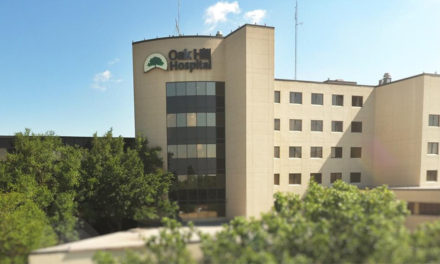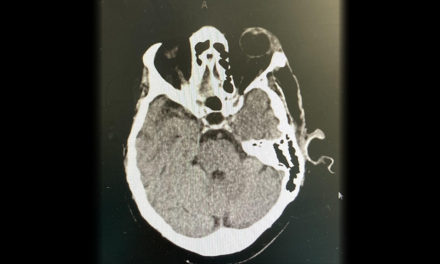COVID-19 and Multisystem Inflammatory Syndrome in Children (MIS-C)
(Note: There is a lot going on, which makes it difficult to keep up with emerging medical information. Below is a brief discussion of a relatively new pediatric syndrome associated with COVID-19. Readers are encouraged to review the referenced articles for a more thorough understanding of MIS-C.)
Per the Centers for Disease Control (CDC), a small proportion of COVID-19 cases seem to have occurred in children relative to the overall disease burden, with approximately 5% of all cases in the United States occurring in people <18 years of age as of June 23, 2020. Additionally, the overall clinical course seems milder in children, and the rate of complications appears to be low relative to adults. A large study of COVID-19 in children documented <6% of patients as developing severe or critical disease.1 Hypotheses for why children have milder illness include: 1) cell receptors for the SARS-CoV-2 virus may be less developed resulting in decreased virus binding; 2) cross-immunity from other viral infections; 3) developing immune systems may respond differently to COVID-19.
Though children seem to have been largely spared, some have severe complications from COVID-19. In April 2020, UK clinicians identified a cluster of pediatric patients presenting with what was described as “hyperinflammatory shock, showing features similar to atypical Kawasaki disease, Kawasaki disease shock syndrome, or toxic shock syndrome.”2 Children described in the report were previously healthy and presented with fevers and a compendium of other symptoms including vomiting, diarrhea, abdominal pain, conjunctivitis, myalgia, odynophagia and rash. Patients progressed to apparent distributive shock that was refractory to volume resuscitation and required inotropic support. Though there was not a definite association with COVID-19, four of the patients had known exposure to COVID-19 prior to illness, and several ultimately did test positive for SARS-CoV-2. Subsequently, children with similar presentations have been reported from other parts of Europe and the United States.3, 4 The reports all describe a syndrome of multisystem involvement and inflammation, shock and COVID-19 association. The CDC has identified the described syndrome as Multisystem Inflammatory Syndrome in Children (MIS-C). Based on the reports available, a lag between the peak of COVID-19 cases in the respective communities and presentation of symptomatic patients suggests MIS-C may be related to a post-infectious complication of SARS-CoV-2 infection and not necessarily the acute infection.
A wide spectrum of presenting symptoms associated with MIS-C have been reported, with the most common being persistent fever (93-100%), GI symptoms (vomiting, diarrhea, abdominal pain; 45-83%), rash (42-57%), and conjunctivitis (36-45%).3, 4, 5 Other symptoms described include headache (26%), mucous membrane changes (21-29%), swollen hands and feet (16%), and sore throat (10%).3, 4, 5 Respiratory symptoms were variable (respiratory distress, shortness of breath) and often ascribed to shock as opposed to a primary pulmonary etiology. Clinical evidence of shock was present in a majority of patients (50-80%).3, 4, 5 Features suggesting Kawasaki disease were present in a proportion of patients, with 12% of patients meeting the American Heart Association diagnostic criteria for Kawasaki disease.5 However, differences between MIS-C and Kawasaki disease exist, with age being one of the distinguishing features: whereas Kawasaki disease is predominantly a disease of young children and infants, most cases of MIS-C have occurred in older children and adolescents.
Laboratory findings in MIS-C have been significant for elevation of inflammatory markers (e.g. C-reactive protein, erythrocyte sedimentation rate, ferritin and procalcitonin) in the great majority of patients. Of note, the C-reactive protein has been significantly elevated with median values ranging from 229 – 250 mg/L in recent studies.3, 4, 5 Elevated cardiac markers, including troponin, B-type natriuretic peptide (BNP) and N-terminal pro-BNP, were also found in a majority of patients.3, 4, 5 Other laboratory abnormalities include: lymphocytopenia, thrombocytopenia, elevated liver enzymes and hypoalbuminemia. Echocardiography has demonstrated left ventricular dysfunction in a significant proportion of MIS-C patients, though the actual frequency is unclear. Dilated coronary arteries were found in a smaller, but significant proportion of patients (14.5-17%).3, 5
Based on the case reports and studies available, the CDC has provided a case definition for MIS-C which includes the following criteria:6
-Individual < 21 years with fever (either subjective fever, or temperature > 38.0 ° C for > 24 hours), laboratory evidence of inflammation, and evidence of clinically severe illness requiring hospitalization with multisystem (> 2) organ involvement; AND
-No alternative plausible diagnosis; AND
-Positive for current or recent SARS-CoV-2 infection by RT-PCR, serology or antigen test; or exposure to a suspected or confirmed COVID-19 case within the 4 weeks prior to the onset of symptoms
Management of MIS-C patients depends on the severity of their presentation. Patients presenting with shock should be resuscitated per standard protocols, recognizing that many patients with shock in recent reports required inotropic support (47-80%) in addition to fluid resuscitation.3, 4, 5 Respiratory support, including endotracheal intubation and mechanical ventilation may be indicated. As MIS-C presents with signs and symptoms suggestive of possible septic shock, early initiation of broad spectrum antibiotics is appropriate pending culture results and definitive diagnosis. Additionally, patients should be treated for Kawasaki disease if they meet criteria. Considering the multisystem effects, organizing a multi-disciplinary team to co-manage the patient is critical.
MIS-C is a new entity and much remains to be determined regarding the pathophysiology, clinical findings, management and prognosis. Early recognition is critical as appropriate management with existing therapies does appear to result in good outcomes in many cases. The long-term prognosis of MIS-C is currently unknown. ■
This article is part of the following sections:
Samantha manages fcep.org and publishes all content. Some articles may not be written by her. If you have questions about authorship or find an error, please email her directly.







